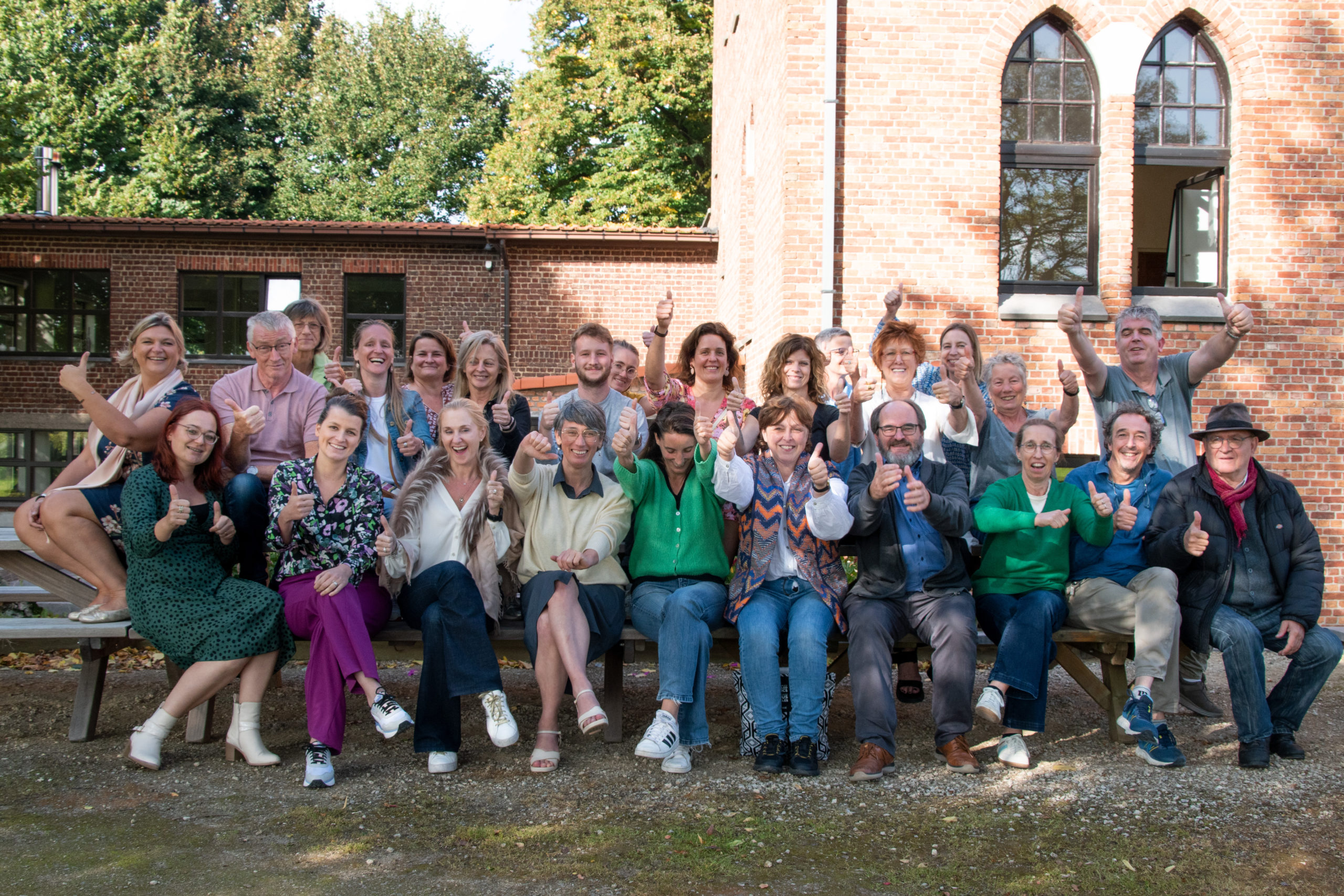Je winkelwagen is momenteel leeg!
De ultieme therapie
Interviews
It’s so good to see this new book by Dr Jan Raes, a practising psychiatrist who has been involved in building the Shared Reading movement in Flanders. In straightforward and down to earth language Dr Raes gives an account with some terrific examples of what Shared Reading is, what it can help people do and why the health and caring professions could benefit greatly from adopting the practice.
Jane Davis
Dirk De Wachter over Samen Lezen
Professor en auteur Dirk De Wachter gaf een lezing op de boekvoorstelling (30/09/2020)
Hij ontmoette Dr. Jane Davis en Prof. Phil Davis in 2013 en is sindsdien
’supporter’ van wat Het Lezerscollectief doet. Hij schreef het voorwoord voor het boek Grenzeloos en
legt in onderstaande reportage uit waarom Samen Lezen hem na aan het hart ligt.
Audio
Interview Jan Raes NPO – Radio1
Kankerexperte Tessa Kerre over heldinnen Marie Curie en Jane Davis (Podcast EOS)
Recensie
SAMEN LEZEN, DE ULTIEME THERAPIE
Je laat je ‘verleiden’ om de inhoud(stafel) te lezen:
– Een eenvoudige dynamiek die grote dingen toelaat
– Vrijheid om te zijn, zonder labels of medisch dossier
– Schiften en loslaten
– Herbronnen in de diepte.
En op de achterflap: Voorbij de grenzen van de therapie.
Samen met de titel brengt je dat inderdaad bij lezers die een zekere kwetsbaarheid hebben. Maar, bij de lectuur van het boek, komt een hele wereld naar boven. Een wereld die beweegt, mijn wereld die groeit, een wereld van genieten ook. Hier moet niets en mag er veel. Samen Lezen werkt beter dan pillen of therapie. Dr. Jan Raes is een believer, alleen dat al geeft geweldig zin om in dit Samen Lezen avontuur te stappen.
Het boek beschrijft in vijf hoofdstukken de dynamiek die tot stand komt door Samen Lezen: starten, groeien, oogsten, leren en ontspannen. Het doet dat met voorbeelden en getuigenissen. Zeker uit de zorgsector, maar voor mij komt dat nergens beperkend over.
Een goed vertrekpunt is in elk geval een grote portie empathie, liefde voor literatuur, en de openheid om jezelf en de deelnemers te laten verrassen door de rijkdom en de helende groeikracht die in verhalen en gedichten zitten.
Mensen halen uit hun routineus leven. Jan Raes’ betoog is ook overtuigend door een vurig geloof in de kracht van een goeie tekst, kortverhaal of gedicht: een toverdoos vol inhouden en dromen, die vonken doen overslaan in de verbeelding van de lezers en die in hun geest een grotere ruimte opent.
Literatuur en poëzie zeker kunnen een heel afstandelijk gevoel opwekken: dat is niks voor mij. Wat mij vooral treft is wat ik bij ArmenTeKort ook in vele facetten bevestigd voel: het starten is sowieso moeilijk, het geloven dat zoiets me (terug) in beweging zal krijgen. En dat in een maatschappij die predikt dat mensen zelf uit hun dal moeten klimmen. De wereld is aan de durvers, de dromers, want armoede is toch iets dat je jezelf aandoet en waar je zelf, met hulp natuurlijk, maar vooral zelf moet uitklauteren. Wie dat niet kan moet op weinig mededogen rekenen. Maar dat starten, moeilijk dus. Samen Lezen voelt aan als een minder hoge hindernis om het een kans te geven.
Het is die scherpe analyse van onze maatschappij en die overtuiging van de leestherapie, die hier wordt voorgesteld, die telkens opnieuw de ruggengraat van dit betoog vormen.
Maar of je nu in die zorgsector zit of daarbuiten, het is niet verwonderlijk dat die eerste stap voor heel velen moeilijk is, de drempel hoog. Begrijpelijk maar zo doodjammer, want ik spreek uit ervaring van twee jaar deelnemen aan een samenleesgroep dat er heel veel vertrouwen en daaruit voortvloeiend spreekvermogen groeit.
Dit boek is dus hopelijk nog een straffer middel dan de mond aan mond reclame die al velen bij Het Lezerscollectief heeft gebracht. Een aanrader dus. Veiligheid, respect voor mijn eigen gekleurde bril, mijn interesses, schaduwen, demonen en de vrijheid om te zwijgen of op dat moment de keuze maken om te spreken, omdat je vanuit vertrouwen iets onder woorden krijgt wat heel diep en soms lang verstopt zit. Bijzonder.
Na twee jaar samen gelezen te hebben in een leesgroep van ArmenTeKort moest ik niet meer overtuigd worden van de methode. Maar dan nog, zelfs na de opleiding gevolgd te hebben, blijft dit boek voor mij een meerwaarde. Dr. Jan Raes slaagt erin om het milieu van de zorg te versterken door wetenschappelijke uitleg (zoals over spiegelneuronen en mentaal-emotionele ruimte) te koppelen aan een dieper-weten dat deze methodiek echt wonderen doet. De reacties van de mensen op zo’n verhaal, maar zeker ook de stukjes verhalen zelf, maken het boek spannend en nodigen uit om zonder aarzelen zelf in zo’n leestraject te starten of beter nodig, via een opleiding, medemensen die kansen te bieden die meer diepte geven én meer vrijheid bieden.
In deze zorgwekkende tijden – en dan heb ik het niet over corona of het klimaat – is volgens mij Samen Lezen een volwaardige weg om naar innerlijke rust en vertrouwen te groeien. En van daaruit (terug) in de wereld te staan.
Kijk nog eens naar de boeiende tekening op de kaft en speel mee met de gelaagdheid ervan. In dit alweer verzorgd uitgegeven boek vind je als leesbegeleider, als samenlezer, als zorgverstrekkende, als mens, een initiatie (tot en met de tips bij elke stap) en een verdieping van de methode. Maar dus meer dan dat, is het een overtuigde oproep naar traagheid, gelaagdheid, vertrouwen en verdieping van elk van ons.



